#FilmmakerMode
Explore tagged Tumblr posts
Text
Christopher Nolan, Paul Thomas Anderson Launch New TV Setting to Fight Motion Smoothing

#ChristopherNolan, #PaulThomasAnderson #Launch New #TV #Setting called "#FilmmakerMode" to #Fight #MotionSmoothing #NewsUpdatesFrom #Naishtika #AVs Read the full article
0 notes
Text
JCT. Hablemos del CES, que es el CES, tecnología en pantallas. La era de los servicios en Apple y convocatoria de fotografía.
0 notes
Text
Day 141: A shift in motives today. We're going to the place that we're going to be filming and getting the set prepared today for #TheDriver. #Filmmakermode

0 notes
Text
Smartphone digital image processing

Back in 2005, the Nokia N90 with swivel screen clamshell design ushered in an era of competition between digital cameras and smartphones.

In those days, most experts characterized the 2-megapixel camera of this smartphone with such epithets as fantastic, unprecedented, gorgeous, etc. Of course, today the picture quality of Nokia N90 evoke other emotions. Probably professional photographers smiled condescendingly, looking at this picture with a low resolution, a minimum dynamic range and a very high noise level even in bright sunshine.

Indeed, the black silhouette of a tree without gradations of shadows and the indistinguishable car number could hardly excite them in terms of possible competition. But after a few years the situation has changed radically. The sales schedule very convincingly illustrates this situation.

Of course, the market for expensive DSLR cameras has specific features. Unlike phones, they perfectly serve their owners for 10 years or more. In addition, new models provide an extremely small increase in quality, further limiting the motivation for replacement. But, of course, cameraphones have become one of the main reasons of the stagnation in this segment. In fact, today only semi-professional and professional DSLR cameras continue to maintain their market position.
A modern cameraphone vs a professional camera for $ 7500?
Recently, the popular Matti Haapoja photographer presented a side-by-side comparison of the picture quality taken with the iPhone 11 Pro and the expensive Canon EOS-1D X Mark II, costing $ 7,500.

Probably, an experienced photographer with sharp vision will be able to correctly determine that the A-picture on the left belong to the Canon EOS-1D X Mark II. But given the difference in price ($ 1,000 vs $ 7,500), in weight (6.63 ounces (188 grams) vs 1.5 kg) and dimensions, this advantage looks very doubtful. No less convincing comparison of the iPhone 11 Pro vs. The Canon 7D Mk II in portrait mode was introduced on YouTube by Computer Clan.

Of course, many people ask a very obvious question: how does a relatively inexpensive smartphone with miniature optics ensure the quality of an expensive professional DSLR camera.
Sensor Dimensions + AI algorithms
Of course, the sizes of modern matrices in smartphone cameras and their specs are radically different from prototypes. For example, Samsung introduced the unprecedented 108-megapixel ISOCELL Bright HMX sensor, which is already used in the Samsung Galaxy S20 5G, Xiaomi Mi Note 10 and Mi 10 Pro.

Video demonstrates this innovative sensor. But, of course, this example is an exception to the rule. Usually, the size of the sensors in DSLR cameras is about 20-30 times larger compared to phones.

However, smartphones provide excellent quality even at night in low ambient light.

However, this reality is consistent with the general trend in the consumer electronics segment. In fact, the device’s platform has ceased to be a major factor in image quality. Today, the lens and sensor provide only the first part of the task, collecting image data and transforming them into electrical impulses. Digital image processing algorithms do the second part of the job. Probably, the contribution of these components can be expressed in percent and numbers. But the growing influence of the processing algorithms is beyond doubt. Of course, they require tremendous performance processor, which solves these tasks. But the latest 8-core Qualcomm Snapdragon 855+, HiSilicon Kirin 990, Exynos 9611, etc cope with them very effectively. Moreover, the performance of even mid-range SoC is excessive in many cases. In fact, a modern smartphone collects an image from individual pixels, calculating and adjusting the value of each of them. In addition, AI of phone actively uses pixel interpolation, generating them if necessary.
AI algorithms
Some algorithms well illustrate the capabilities of modern smartphones. Probably, many saw photos with the popular bokeh effect.

The corresponding algorithm in phone works as follows. First, the camera must separate the objects in the frame to snap them to the foreground and background. But for this, the algorithm must estimate the distances to each object in the frame. Two cameras, for example, on the back of the phone, use the traditional principle of determining depth. In this case, each of the two cameras takes one picture. Accordingly, the angle of shots will be slightly different.

Then the images are superimposed on each other, visualizing the displacement of objects in the frame.

This method uses the parallax effect. As known, parallax is a change in the apparent position of the object relative to the distant background, depending on the viewing angle. For small angles, the distance to the object is equal to the ratio of the distance between the view points (centers of cameras lenses) to the displacement angle (d = l / α). But parallax does not work for selfies due to the lack of a second camera. In this case, the camera can use semantic segmentation, dividing the photo into two layers with pixels of the main object and background. Then the algorithm will defocus the background layer, providing a bokeh effect. Unlike a DSLR camera, it does not provide a smooth change in the depth of field. But this quality is more than enough for a selfie.
HDR and auto semantic segmentation
Of course, these are not the most difficult tasks. High-quality bokeh effect with a single main camera requires more sophisticated technologies, but better illustrates the possibilities of digital image processing. Firstly, the camera forms an image with a high dynamic range (HDR), providing high detail in dark and light parts of the frame. For this, the smartphone takes a series of shots, selects the best fragments from each and forms one picture of the highest quality.

This technology is very similar to the creation of Frankenstein, but from the best legs and arms. Further, the camera begins to use machine learning and neural networks. It automatically detects all objects in the foreground and background using semantic segmentation. For this purpose, the neural network uses a huge database. For example, to identify people, it uses various photos with their images in various poses, clothes, with different hairstyles, etc. As a result, the neural network will create something like this silhouette with a cup in his hands.

Next, the camera will defocus the black area, providing a bokeh effect.
PDAF with Dual Pixel technology
Further quality improvement requires the formation of a depth map for smooth blurring the background. To solve this problem, the camera uses PDAF (Phase Detection Autofocus) with Dual Pixel technology. Simplified, it works as follows. Each pixel of the sensor includes two independent photodiodes.

In turn, a tiny lens is placed above each pixel, which divides the light flux into two parts.

As a result, one photodiode receives the light flux from the left half of the lens, and the other from the right. In fact, this technology provides a parallax effect, allowing the algorithm to calculate the stereo effect and build a depth map. As a result, even one smartphone camera provides a bokeh effect with smooth change in the depth of field.
Conclusion
Of course, image processing algorithms for creating bokeh effect make up only a small part of the capabilities of modern smartphones. But they well illustrate the pronounced trend of rapid development of the AI-technologies in this segment. As a result, this causes a philosophical discussion about naturalness, realism, etc. Probably, many will prefer imperfect realism instead of the splendor of an artificial colorful image. In fact, something similar happens on television with Filmmaker Mode. As known, Tom Cruise urged viewers to abandon some playback optimizations in TVs to preserve the original intent of the filmarkers, including the directors, cameramans, etc. In fact, TV in this mode will play movies with the original color reproduction, aspect ratio and frame rate. Today LG, Panasonic and Vizio, already supported the creation of this mode, implementing its support in their models. In any case, photographers with professional DSLR cameras will continue to delight fans of large colorful photographs without the intervention of AI technologies. But the segment of budget and mid-budget cameras is hopelessly losing to smartphones. Read the full article
#108-megapixelISOCELLBrightHMXsensor#bokeheffect#CanonEOS-1DXMarkII#FilmmakerMode#HiSiliconKirin990#iPhone11Pro#PDAFwithDualPixeltechnology#SamsungGalaxyS205G#Smartphonedigitalimageprocessing#XiaomiMi10Pro#XiaomiMiNote10
0 notes
Text
New technologies in LG TVs 2020 Review
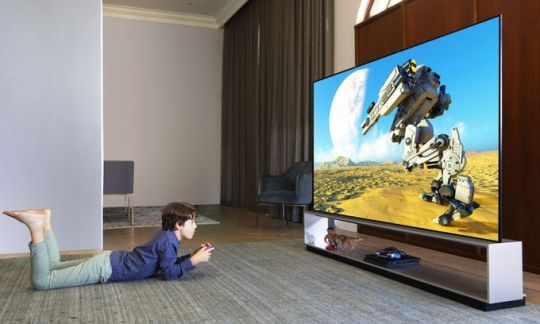
An innovative trend in the consumer electronics segment has dominated for several decades. Of course, it is most clearly manifested in the high-tech sector. Almost all smartphones, TVs, projectors, robotic vacuums and even dishwashers use processors that provide the expansion of their functionality due to smart options. In fact, innovation has become a necessary condition for competitiveness of any modern device. Of course, market leaders lead this trend. LG, Samsung, Sony, etc regularly present innovative models with new technologies. As known, the annual CES is one of the main venues for their demonstration. As usual, at CES 2020, companies demonstrated their latest achievements. In particular, Samsung introduced AI ScaleNet video codec, Object Tracking Sound Plus technology, Q Symphony, etc. Of course, LG also demonstrated a wide range of innovative solutions. Many of them are based on the new powerful α (Alpha) 9 Gen 3 AI processor with AI Deep Learning algorithms. With the exception of the BX OLED 4K series and Nano85 NanoCell 4K series, all new LG TVs use it. In particular, α9 Gen 3 supports AI 8K upscaling, AI Picture Pro, AI Brightness and AI Sound Pro technologies. As known, AI Picture Pro technology optimizes the image.
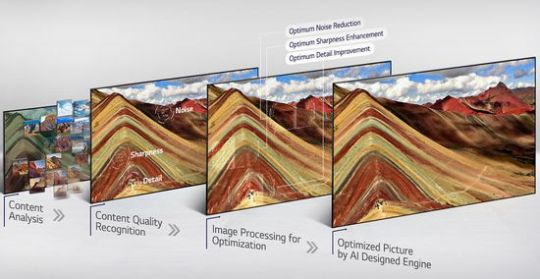
Moreover, AI Picture Pro recognizes faces and text on the screen and improves the clarity of the facial features and the accuracy of the reproduction of skin tones. AI Brightness with a light sensor detects the ambient light level and automatically optimizes the image brightness.
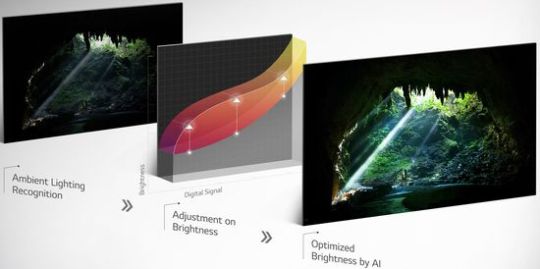
AI Sound Pro technology analyzes and classifies sound into five categories, choosing the optimal playback mode. In addition, LG has added several fundamentally new features.
Filmmaker Mode
Filmmaker Mode automatically disables motion smoothing and image enhancement technologies to play back the original video content. As known, Tom Cruise was the initiator of this topic. He urged viewers to abandon some playback optimizations to preserve the original intent of the filmarkers, including the directors, cameramans, etc. In fact, TV in this mode will play movies with the original color reproduction, aspect ratio and frame rate. In principle, today the user can disable some functions manually, achieving the same effect. But Filmmaker Mode in new models will do this automatically. UHD Alliance, including LG, Panasonic and Vizio, also supported the creation of this mode. In particular, the UHD Alliance proposes to activate this mode manually using the remote control, or automatically through metadata on the disk or in the broadcast. Vizio promises support for Filmmaker Mode in TVs of 2020. As known, Netflix has already launched a similar setup in Calibrated mode. Today, some well-known directors, including Rian Johnson, JJ Abrams, Christopher Nolan, Ryan Coogler and Martin Scorsese, have already supported this initiative.
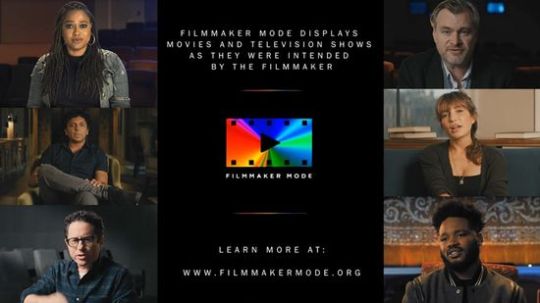
NextGen TV
All new LG TVs support the NextGen TV standard, which provides UltraHD signal reception over terrestrial television networks. As known, the American Consumer Technology Association (CTA) introduced the logo and name of the ATSC 3.0 standard.

It is intended for broadcasting 4K, which starts this year. In addition to 4K, the standard supports HDR and immersive audio, including Dolby Atmos and DTS: X. Additionally, this signal may include emergency messages and IP support. In fact, ATSC 3.0 can be a tool for integrating Internet content into TV broadcasting. According to surveys, 43% of Americans consider support for NextGen TV as a significant advantage of model.
Dolby Vision IQ
Dolby Vision IQ is an upgraded HDR version using light sensors in TV. Of course, Dolby Labs, which developed the Dolby Vision format, does not require the introduction. At CES 2020, this company demonstrated the next stage in the development of HDR technology. In fact, the Dolby Vision IQ system uses the built-in light sensors in the TV to automatically calibrate the image on the screen depending on the ambient light level.
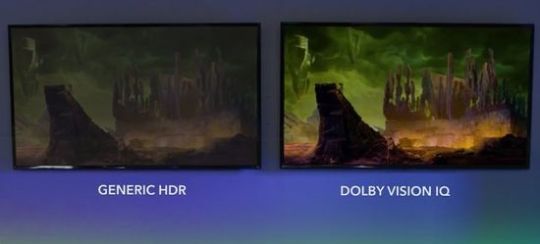
As known, it directly affects the image quality. Probably, many have heard about the ISF calibration service, which provides optimal settings for day/night playback. Unfortunately, its cost in America reaches $ 300. Dolby Labs proposed the automatic implementation of this option on the built-in hardware level in the TV. In fact, the AI Brightness option in TV will automatically change the brightness, based on data from the light sensors. Today, most smartphones already support this option to increase the readability of text on the screen. Moreover, Dolby Vision IQ identifies the content type and automatically selects the best mode. In LG TVs, this feature is called Auto Genre Selection. It recognizes four genres, including movies, sports, standard video and animation.
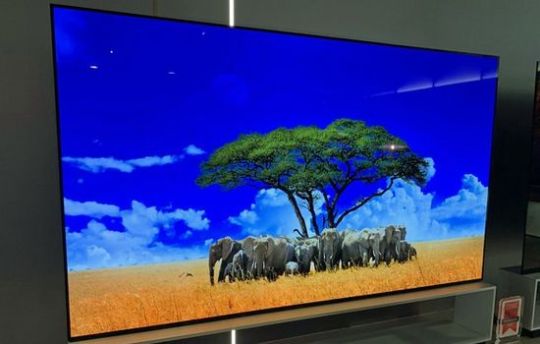
In general, we can note some paradoxicality of these innovations. On the one hand, Filmmaker Mode reduces the level of automation in TV control, on the other hand, Dolby Labs IQ significantly expands it. Probably, the choice by the user should remain the main one in these modes. The idea of automatically activating Filmmaker Mode without viewer intervention seems dubious.
Conclusion
In general, CES 2020 has once again confirmed the innovative trend of major manufacturers of consumer electronics. LG introduced more than 10 new series this year, including OLED and NanoCell with 4K and 8K resolution. As many remember, the price of last year's 88-inch LG OLED 88Z9 8K reached $30,000. The cost of the new LG Signature OLED 8K ZX TVs, including 88-inch OLED 88 ZX PUA and 77-inch OLED 77 ZX PUA, are unlikely to be lower. They are unlikely to become BestSellers, but perfectly illustrate the development of this segment. But LG NanoCell 8K TVs will be available. For example, the price of last year’s LG Nanocell 75SM9970PUA (75SM9900 in Europe) 8K TV today is slightly above $ 5,000. Apparently, Nano99, Nano97 and Nano95 versions of 8K NanoCell TVs will compete with Samsung Q950TS 8K with bezel-less Infinity Design. Its screen-to-body ratio reaches an unprecedented 99%. Finally, many LG OLED 4K TVs, including ultra-thin models (Wallpaper and GX Gallery Series), rollable TVs (RX Series), 48-inch OLED48CXPUA of CX Series with Nvidia G-Sync built-in, and entry-level BX range traditionally claim to be BestSellers. This video shows the LG Signature OLED 8K ZX at CES 2020. Read the full article
#AI8Kupscaling#AIBrightness#AIPicturePro#AISoundPro#DolbyVisionIQ#FilmmakerMode#LGGXGallerySeries#LGNano95#LGNano97#LGNano99#LGNanocell75SM9970PUA#LGNanoCell8KTVs#LGOLED88ZXPUA#LGWallpaperOLED4K#NextGenTV#α9Gen3AIprocessor
0 notes
Text
LG TVs with new technologies at CES 2020 Review
As usual, CES 2020 attracted a lot of expert attention. Of course, the innovative 8K TVs aroused the greatest interest. Predictably, the development trend in this segment has not changed. AI video processing technology (8K AI upscaling), 5.1-channel audio and optimization of game mode remain the foundation of their improvement. In addition, companies continue to reduce screen thickness and increase screen-to-body ratio. For example, LG introduced ultra-thin Wallpaper and GX Gallery Series, and Samsung showcased the Q950TS 8K with bezel-less Infinity Design. Its screen-to-body ratio reaches an unprecedented 99%. Predictably, TVs with 8K resolution provoked a heated discussion about their certification. According to the 8K Association (8KA), certified 8K TVs must provide at least 7680 × 4320 resolution, peak brightness of about 600 nits, and support HDMI 2.1 and HEVC (H.265). As known, in 2002, a group of companies, including Hitachi, Matsushita Electric Industrial, Philips, Silicon Image, Sony and Thomson (RCA), developed the HDMI (High Definition Multimedia Interface) standard for video transmission. In 2017, the HDMI Forum introduced the latest HDMI 2.1 version. Its specs include a maximum bandwidth of up to 48 Gb/s, which supports 10K and 8K video transmission with a frame rate of 120 Hz. In addition, the standard includes support for dynamic HDR, gaming Game Mode VRR, HDCP 2.2, etc. The H.265 or HEVC (High Efficiency Video Coding) format uses the most efficient algorithms for compressing the video stream. Of course, certification provides an additional marketing advantage and companies are interested in obtaining it. However, this aspect contains some nuances.
8K Certification
Unfortunately, the disagreement between the two South Korean giants regarding the certification of 8K TVs remains unresolved. Several years ago, Samsung, Panasonic, Hisense, TCL Electronics and AU Optronics (8K panels) created the 8K Association. But, LG did not join 8KA by creating the International Committee for Display Metrology (ICDM) to certify 8K displays. Ultimately, a rather acute discussion arose between them. In particular, ICDM developed the Contrast Modulation test, which counts the displayed white and black lines with a width of one pixel. According to this technique, image clarity (resolution) depends on the number of displayed lines. ICDM substantiates its methodology with a reference to IDMS (Information Display Measurements Standard). According to LG, the presence of 33,177,600 pixels is not enough for the 8K model status, because the panel must also identify each pixel. Otherwise, an increase in their number loses its meaning due to the merging the brightness and color mixing. According to the company, test results LG 8K TVs showed Contrast Modulation (CM) up to 90%. The company calls this level “real 8K”. But the modern IDMS standard requires only 25% for images or 50% for text. Under the CTA certification, the 8K model must provide at least 50% CM. But opponents of ICDM object, that CM does not take into account the colors. Indeed, we are unlikely to see a black and white 8K movie. In addition, ICDM group recently softened LG’s previous position. However, this situation is not unique. For example, Epson has been proposing for many years to incorporate Color Light Output into projector specs, emphasizing the advantage of its 3-matrix 3LCD technology. But this professional discussion does not interfere with the market. Ultimately, the rating of 8K TVs will depend on the opinion of the consumer, regardless of sticker availability.
LG TVs at CES 2020
This year, LG introduced an unprecedented number of new TVs, including new 4K/8K OLED and NanoCell models. With the exception of the BX series OLED 4K and Nano85 series NanoCell 4K, all TVs use new powerful α (Alpha) 9 Gen 3 AI processor with AI Deep Learning algorithms. In particular, α9 Gen 3 supports AI 8K upscaling, AI Picture Pro, AI Brightness and AI Sound Pro technologies. As known, AI Picture Pro technology optimizes the image. Moreover, AI Picture Pro recognizes faces and text on the screen and improves the clarity of the facial features and the accuracy of the reproduction of skin tones. AI Brightness with a light sensor detects the ambient light level and automatically optimizes the image brightness. AI Sound Pro technology analyzes and classifies sound into five categories, choosing the optimal playback mode. This list includes music, movies, sports, drama and news. With the exception of HDR10+, TVs support all HDR standards, including HDR10, HLG and Dolby Vision. Last year, LG already offered models with expanded Nvidia G-Sync support. This year, the twelve LG OLED models have the built-in frame syncing technology providing gaming mode at 4K resolutions up to 120fps. In addition, LG has added several fundamentally new features, including Filmmaker Mode and Dolby Vision IQ (AI Brightness option).
Quad Step Noise Reduction and Sharpness Enhancer technologies
Of course, TVs use previous LG's Quad Step Noise Reduction and Sharpness Enhancer technologies. As known, digital video cannot have noise on the screen. LG uses this term because many have known it since the time of analog video. In fact, this technology corrects errors that occur during video encoding. This list includes sharp transitions of color shades, the appearance of a halo around objects, etc. A special program analyzes possible typical errors and corrects them when detected. But it is practically useless for video encoded with modern codecs with high-quality compression of the source file. Sharpness Enhancer enhances image clarity. This technology precisely separates the main object from the background images. Then the algorithm analyses textures and edges and performs video processing based on its results.
Conclusion
In general, CES 2020 has confirmed the dominance of innovative trend in consumer electronics. This year, LG introduced more than 10 new OLED and NanoCell series with 4K and 8K resolution. Today the price of last year's 88-inch LG OLED 88Z9 8K almost reaches $30,000. The cost of the new LG Signature OLED 8K ZX TVs, including 88-inch OLED 88 ZX PUA and 77-inch OLED 77 ZX PUA, are unlikely to be lower. They probably won't BestSellers, but perfectly illustrate the development of this segment. Оf course, the LG NanoCell 8K TVs will be more available. For example, the price of last year’s LG Nanocell 75SM9970PUA (75SM9900 in Europe) 8K TV today is slightly above $ 5,000. Apparently, Nano99, Nano97 and Nano95 versions of 8K NanoCell TVs will compete with Samsung Q950TS 8K and Sony Z8H 8K. Finally, many LG OLED 4K TVs, including ultra-thin models (Wallpaper and GX Gallery Series), rollable TVs (RX Series), 48-inch OLED48CXPUA of CX Series with Nvidia G-Sync built-in, and entry-level BX range traditionally claim to be BestSellers. This video shows the LG NanoCell Nano 99 8K at CES 2020. Read the full article
#AI8Kupscaling#AIBrightness#AIPicturePro#AISoundPro#ContrastModulation#DolbyVisionIQ#FilmmakerMode#HDMI2.1#LGGXGallerySeries#LGNano95#LGNano97#LGNano99#LGNanocell75SM9970PUA#LGNanoCell8KTVs#LGOLED88ZXPUA#LGWallpaperOLED4K#QuadStepNoiseReduction#SharpnessEnhancer#α9Gen3AIprocessor
0 notes